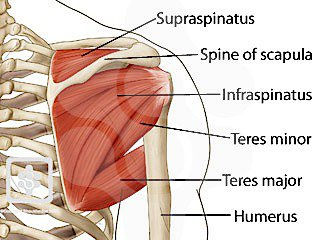Shoulder pain: Do we finally have the answer?

It has been well documented over the recent years that the best way to treat a shoulder is with strengthening exercises. This advice and research is applicable for people with rotator cuff tendinopathies, full or partial tears, for arthritic shoulders and for frozen shoulders. You can read our previous articles surrounding this here
There are still reported cases whereby people are choosing to take a surgical approach to their shoulder problem in favour of strengthening exercises, yet the evidence is getting stronger to support that surgery has no significant difference over exercise. We have discussed this in previous articles, available here

What hasn't been clear in the published evidence is what exercise, if any, is shown to be more effective at improving shoulder symptoms. Leaders in the field of shoulder rehabilitation have had differing views: Jo Gibson will advise on allowing symptoms to settle and a gentler rehabilitation approach, whereas Dr. Chris Littlewood would encourage an active strengthening programme to the affected area. Personally and anecdotally, I have found greater results with the Littlewood approach. Littlewood (2016) suggests that we (the Physiotherapist) should establish the patient's most painful movement and use that as the basis of the exercise, be it arm to the front, or to the side. What this doesn't allow for, is a fair or comparison to establish which movement is more beneficial that the other.

In a study by Chaconas et al (2018) they set out to establish whether one particular exercise was more superior over general shoulder exercise. The movement the researchers studied was eccentric lateral rotation
eccentric: works whilst lengthening
lateral rotators: to rotate outwards

The researchers split their volunteers into two groups, 1 performing the exercise, similar to the image, and a control group. The results of the study showed a significant improvement in those performing the specific exercise over the control group.
However The method of the study shows that the control group were not given strengthening exercises. The study shows that the participants were only given exercises that encourage the volunteers to lift their arm in front of them and to the side. No one in the control group was given anything to put the movement under resistance. What the study does show is strengthening exercises are superior to movement exercises, however what this study hasn't been able to identify is that we are still unable to give our clients the exercise that has superiority over others. This is an exercise that I have added to my treatment repertoire but it certainly hasn't replaced ones that I already use as they have been extremely beneficial to all of my clients with shoulder problems.
If you or someone you know suffers with shoulder pain, then be sure to contact Mike Stamp Physio & Pilates. To be sure of all of the latest evidence surrounding Physiotherapy, like and follow our Facebook page



















